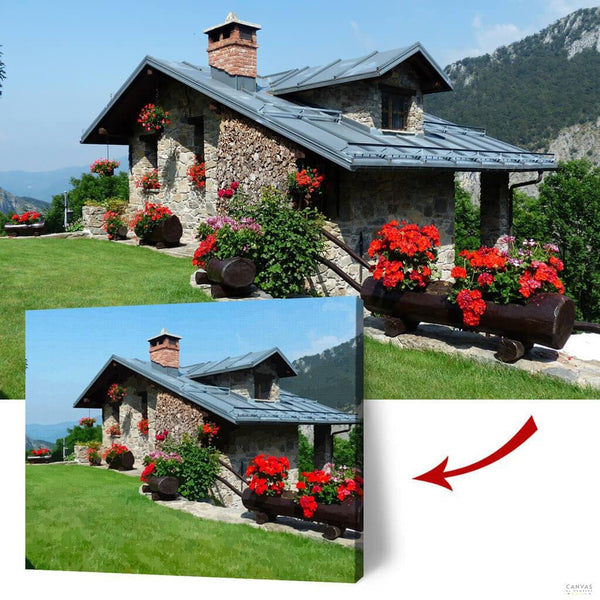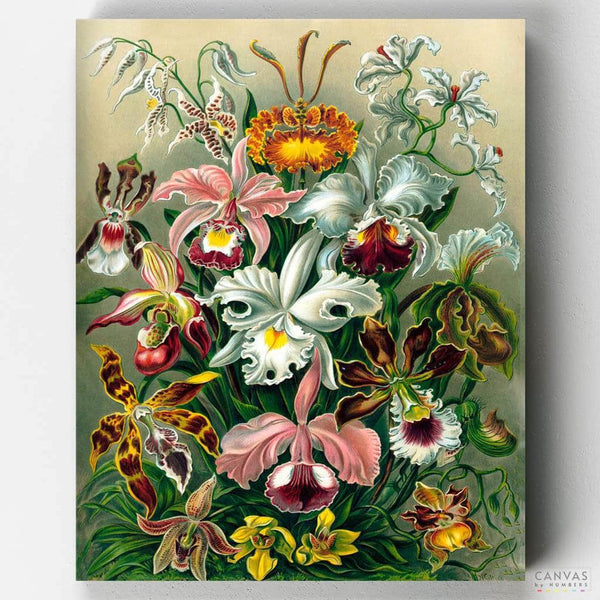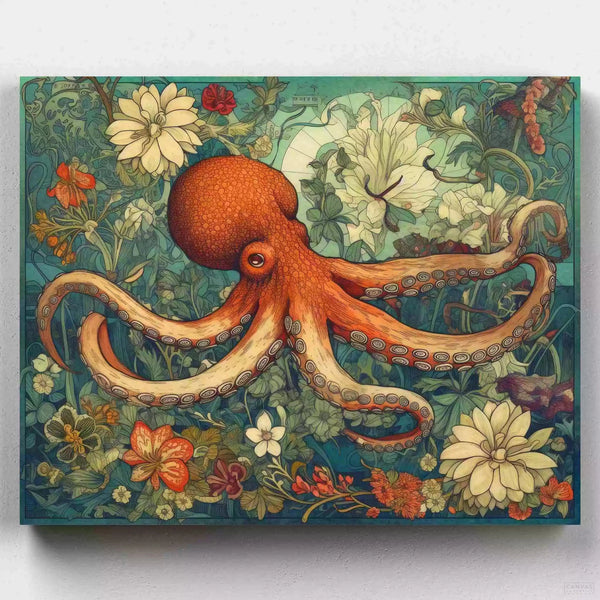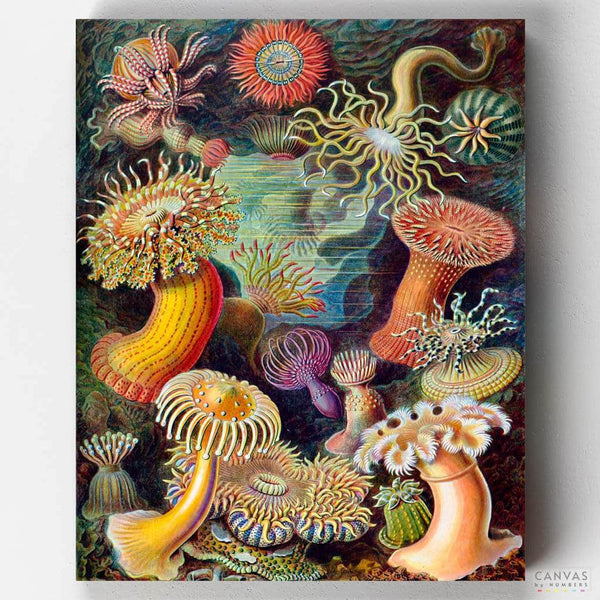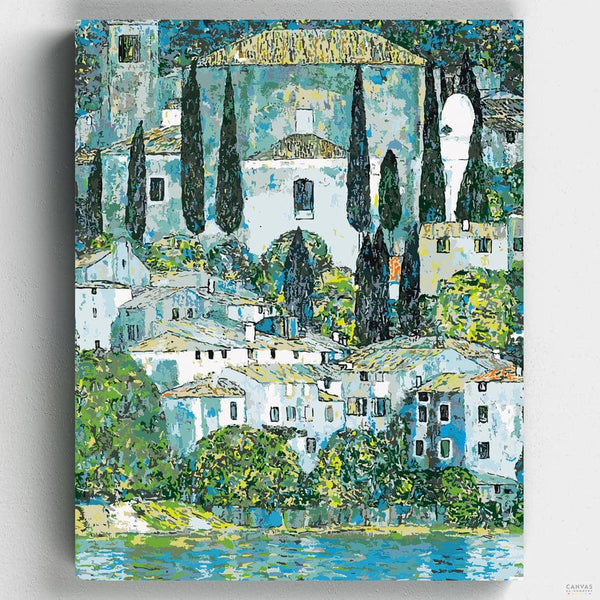For innate talent, formal training, or reasons that we may never fully understand, there are names of painters that resonate in our minds even if we are novices in the world of art.
Goya, Velázquez, Picasso, Miguel Ángel, Monet, Rembrandt, Van Gogh... The list of the world's most famous painters is as extensive as the legacy they left for posterity. The one we bring you in this Canvas by Numbers post may be subjective, but we know that objectivity has very little room in art.
1. Vincent Van Gogh (1853-1890)
The first on our list is the quintessential Dutch painter: Vincent Van Gogh. Famous among those who knew him for his gruff character and the creator of more than 900 paintings, he only sold one during his lifetime. However, posthumously, he became one of the most famous painters in history.
Did you know that he was so poor that he couldn't afford any models? That's the reason he created so many self-portraits, such as the Self-Portrait with a Straw Hat. Nevertheless, Van Gogh's most famous painting is "The Starry Night", a work painted in the French sanatorium where he lived shortly before his suicide by gunshot.
The painting represents the landscape Van Gogh had from the sanatorium room, a piece created in the post-impressionist style that characterizes much of his work in his mature stage.
2. Pablo Picasso (1881-1973)
Born in Málaga in 1881, Picasso experimented with various styles throughout his career, but his innovative and daring nature led him to become one of the foremost representatives of Cubism, a avant-garde artistic movement.
The painter from Málaga is globally renowned for "Guernica," a work created in 1937 in response to the bombing of the Basque town of the same name. The painting is over 7 meters long and nearly 3.5 meters high, a true mural through which, from his exile in Paris, he aimed to reflect the horrors and suffering of his compatriots during the years of the civil war.
"Guernica" returned home in 1981, and since 1992, it has been on permanent display at the Reina Sofía Museum in Madrid.
3. Claude Monet (1840-1926)
Monet was the French painter and father of Impressionism, a painting style based on the overlap of colors, original approaches, brushstrokes, and bold strokes, eliminating details in favor of the overall impression, among other characteristics.
As is often the case with artistic styles that break with the established norms, Claude Monet initially faced strong rejection from academic painters. However, with time, this did not prevent him from entering the ranks of the most famous painters of all time.
Monet's most well-known paintings depict women and outdoor scenes, such as "Impression, Sunrise," "Field of Poppies," "Woman with a Parasol," and "The Artist's Garden at Giverny," to name a few of the works by this famous French painter.

4. Francisco de Goya (1746-1828)
Francisco de Goya was one of the great artists of his time. A native of Fuendetodos (Zaragoza), this famous Spanish painter took some time to enter the Academy of Drawing in Zaragoza and progressed as an artist rather slowly.
Better late than never, his constant vocation and dedication eventually led him to work as a court painter in Madrid. In his mature stage, Goya captured the essence of the capital through his genre paintings, not without a touch of social criticism.
Similar to another contemporary genius, Beethoven, Goya became deaf, believed to be due to lead poisoning from the white pigments he used: it was common for painters to clean the canvas with a cloth moistened with the tip of their tongue, unknowingly ingesting the chemicals in the paints.
His body of work is extensive, spanning styles from Romanticism to Surrealism and Expressionism, thus anticipating his time. Among Goya's most famous paintings are "Saturn Devouring His Son," "The Naked Maja," "The Third of May in Madrid," and "The Sleep of Reason Produces Monsters" (an aquatint etching).
5. Rembrandt (1606-1669)
Going further back in time, we discuss the next name on our list, the Dutch artist Rembrandt Harmenszoon van Rijn.
He is one of the most important and famous painters in history, earning the title of master of the Baroque and representing the Dutch Golden Age when the nation was an international superpower.
Unlike Van Gogh, Rembrandt enjoyed economic prosperity for years, although he was forced to auction all his belongings toward the end of his life due to financial setbacks.
His self-portraits (he painted hundreds of them) and paintings depicting group scenes, such as "The Return of the Prodigal Son" and "The Night Watch," one of his most well-known works, are particularly valued.
6. Diego Velázquez (1599-1660)
Contemporary of Rembrandt and endowed with similar talent, the Sevillian Diego Velázquez is another of the most famous painters in history and one of the greatest exponents of universal Spanish painting.
Like Goya, Velázquez served in the court of the king, then Philip IV, during the most splendid years of the Spanish Golden Age. Velázquez's preferred style was Baroque realism, predominant at the time, of which he was a true master.
His name will be forever linked to one of the most famous paintings in the world, "Las Meninas," where the artist painted Infanta Margarita Teresa of Austria surrounded by her attendants, including a self-portrait.
7. Gustav Klimt (1862-1918)
Gustav Klimt, known as the artist who "painted with gold," was an Austrian painter and a representative of Symbolism, an avant-garde painting movement based on conceptual expression.
Talented and a womanizer, sensuality, love, femininity, and eroticism were frequent themes in Klimt's paintings, initially considered scandalous by critics, bordering on the pornographic for the time.
Klimt's preferred format was the Byzantine-style mosaic embellished with gold leaf, producing beautiful works such as "The Kiss," "Woman with a Fan," and "Portrait of Adele Bloch-Bauer I," also known as "The Woman in Gold.

8. Wassily Kandinsky (1866-1944)
Although he initially pursued studies in Law and Economics at the University of Moscow, Kandinsky abandoned this path to pursue his true calling: painting.
Kandinsky is the author of the work "Concerning the Spiritual in Art," a book where he outlines the principles of abstract painting, including the prominence of emotions over the object.
The Russian painter, who also lived in Germany and France during his lifetime, led Der Blaue Reiter, a group of German expressionist painters advocating for a new form of art, more subjective and centered on the emotions of the individual.
Among Kandinsky's most famous paintings, we can mention "Composition IV," "Houses in Munich," and "Painting with Troika."
9. Franz Marc (1880-1916)
Franz Marc, a member of Der Blaue Reiter along with Kandinsky, was one of the exponents of German Expressionist painting. His vision of art rejected reality as we perceive it in favor of feeling and emotion.
Like other famous painters of his time, the German artist was heavily influenced by the historical pessimism of the moment, a sense of anguish reflected in his works.
In Marc's case, the protagonists of his paintings are animals, as he believed they were much purer and more worthy of being painted than humans. In his canvases, these animals appear with colors far from realistic, such as blue and yellow, representing masculinity and femininity, respectively.
"The Yellow Cow," "The Blue Horse," and "Cat on a Yellow Cushion" are among the most famous paintings by Franz Marc.

10. Frida Kahlo (1907-1954)
We conclude our list of famous painters not with a painter but with a painter. In fact, she is one of the most well-known women painters of the 20th century: the Mexican Frida Kahlo.
She is especially famous for her self-portraits, where she often appears dressed in the style of pre-Columbian Mexican women, a reflection of her revolutionary nationalist ideas.
Critics classified Frida Kahlo's work as surrealistic, although she always claimed that she did not paint dreams but her own life, marked by the loneliness of her childhood and some serious illnesses.
The paintings of the world's most famous painters, on Canvas by Numbers
At Canvas by Numbers, we are driven by the desire to offer those unfamiliar with art a way to paint a picture with their own hands. The reason behind this is twofold: on the one hand, it is a relaxing activity to relieve stress, and on the other hand, the result is very rewarding.
The way to achieve this is through the paint-by-number system: the canvas with the chosen picture divided into numbered areas, to apply the corresponding color in each one.
Furthermore, with your purchase, you will receive the kit with everything you need to get started: the canvas, pre-mixed acrylic paints, brushes of different sizes, a copy of the picture, and a guide with instructions.
Do you want to step into the shoes of one of the greatest painters in history?
Take a look at our collection of famous paintings here and unleash the artist within you!









